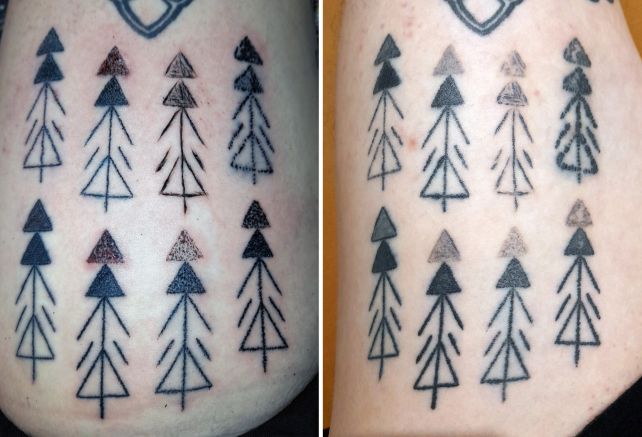ramonmercado
CyberPunk
- Joined
- Aug 19, 2003
- Messages
- 58,224
- Location
- Eblana
Health Services were better back in those days.
5000-year-old ‘Iceman’ may have benefited from a sophisticated health care system
By Joshua Rapp LearnSep. 7, 2018 , 2:40 PM
Ötzi, the 5300-year-old “Iceman” discovered frozen in the Italian Alps in 1991, was a medical mess. His teeth were rotting, he had a bad stomach bug, and his knees were beginning to degenerate—not to mention the arrow in his back that probably killed him. Now, a new study concludes the herbs and tattoos he seems to have used to treat his ailments may have been common around this time, suggesting a sophisticated culture of health care at this point in human history.
Previous studies have found that Ötzi carried a number of suspected medicines either on him or in him. Fastened to leather bands in his equipment, researchers found the birch polypore fungus, which the Iceman may have used to calm inflammation or as an antibiotic. Scientists also found bracken fern in his stomach, which can be used to treat intestinal parasites such as tapeworm. And Ötzi was covered with 61 tattoos (such as the one on his back, pictured above) including dotlike points around joints, which some researchers believe may have been used as pain treatment akin to an early form of acupuncture. ...
http://www.sciencemag.org/news/2018...ve-benefited-sophisticated-health-care-system
5000-year-old ‘Iceman’ may have benefited from a sophisticated health care system
By Joshua Rapp LearnSep. 7, 2018 , 2:40 PM
Ötzi, the 5300-year-old “Iceman” discovered frozen in the Italian Alps in 1991, was a medical mess. His teeth were rotting, he had a bad stomach bug, and his knees were beginning to degenerate—not to mention the arrow in his back that probably killed him. Now, a new study concludes the herbs and tattoos he seems to have used to treat his ailments may have been common around this time, suggesting a sophisticated culture of health care at this point in human history.
Previous studies have found that Ötzi carried a number of suspected medicines either on him or in him. Fastened to leather bands in his equipment, researchers found the birch polypore fungus, which the Iceman may have used to calm inflammation or as an antibiotic. Scientists also found bracken fern in his stomach, which can be used to treat intestinal parasites such as tapeworm. And Ötzi was covered with 61 tattoos (such as the one on his back, pictured above) including dotlike points around joints, which some researchers believe may have been used as pain treatment akin to an early form of acupuncture. ...
http://www.sciencemag.org/news/2018...ve-benefited-sophisticated-health-care-system



